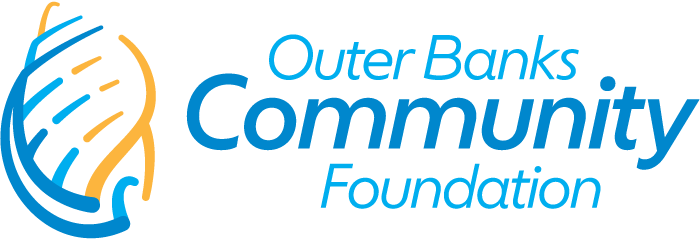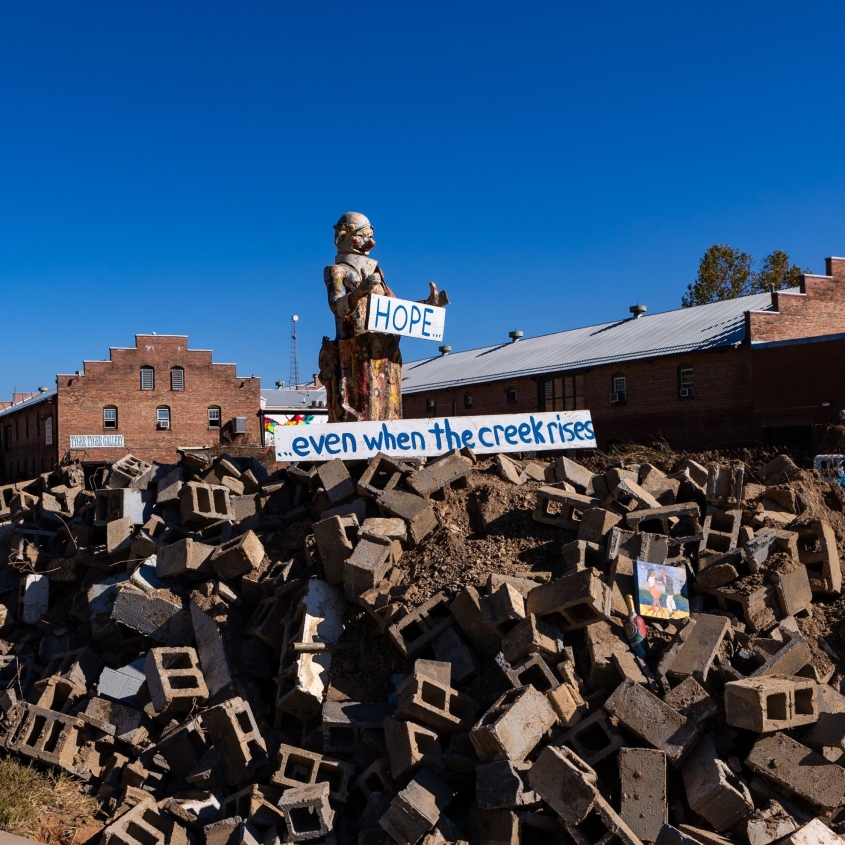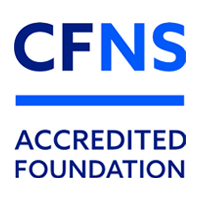One Year Later: Hurricane Helene Recovery Continues, With Help From Across North Carolina
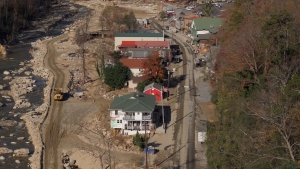
Chimney Rock Village received $200,000 for engineering costs related to river improvements and preliminary design documents for the restoration of the Rocky Broad River extending from Chimney Rock Village to Lake Lure. Photo courtesy of Chimney Rock.
On September 27 last year, Hurricane Helene slammed into western North Carolina (WNC), leaving a trail of devastation few could have imagined. As the storm’s aftermath came into focus, the damage was staggering: more than 100 lives lost, over 120,000 homes damaged or destroyed, and critical infrastructure—6,000 miles of roads, 1,000 bridges, and 160 water systems—crippled. Entire mountain communities were cut off for weeks without power, cell service, or access to emergency aid.
“This hurricane devastated entire communities,” said Jennifer Tolle Whiteside, President and CEO of the North Carolina Community Foundation. “People couldn’t communicate, didn’t have internet access, and were struggling with day-to-day challenges. That made it hard for them to even ask for help.”
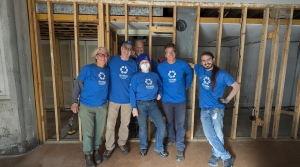
Photo courtesy of NECHAMA.
But even before the winds died down, North Carolina’s philanthropic community sprang into action. Foundations across the state mobilized with speed and purpose, deploying tens of millions in disaster aid.
The Community Foundation of Western North Carolina activated its Emergency and Disaster Response Fund almost immediately, eventually distributing $39.6 million to support nonprofit partners and public agencies. Dogwood Health Trust committed more than $70 million in 2024 toward both immediate relief and recovery and is allocating additional resources toward long-term rebuilding. And, the Truist Foundation launched a $21 million Recovery and Resiliency Fund to support small businesses and housing.
“This wasn’t just about writing checks,” said Susan Mims, CEO of Dogwood Health Trust. “It was about listening, showing up, and ensuring that local voices led the response. We had to rebuild, yes—but more than that, we had to restore hope and capacity.”
That effort extended far beyond the mountains.
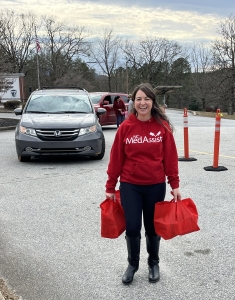
Sandy – Distributing OTCs at Sunny View Elementary – Polk County. Photo courtesy of NC MedAssist.
From the Outer Banks, support for our neighbors in WNC came swiftly. While local volunteers organized supply missions and first responders traveled west to assist, the Outer Banks Community Foundation (OBCF) led a powerful philanthropic response. To date, OBCF has awarded over $150,000 in grants from twelve charitable funds, including new grants to Mercy Chefs from individual donors and to six disaster recovery charities from the Kelly Family Fund, providing vital support to nonprofits on the front lines of recovery.
“It’s easy to think of the Outer Banks as far removed from the mountains,” said Jennifer Tolle Whiteside. “But the response from eastern North Carolina was incredible. The generosity from the Outer Banks Community Foundation and its donors reminded us that even in a geographically diverse state, we’re one community.”
That sense of unity was echoed by Elizabeth Brazas, President of The Community Foundation of Western North Carolina.
“We are deeply grateful for the relationships we had before the storm in the region and beyond,” she said. “Our funding partners quickly came together and collaborated to allocate funds to WNC. We remain inspired by the spirit of determination and mutual aid that developed through need and was strengthened through collaboration and partnership.”
The results of this collaboration are visible today. Riverways once clogged with debris are being restored by MountainTrue. Mountain BizWorks continues to help small businesses stay open through targeted grants. Legal aid organizations like Pisgah Legal Services are working with families who lost everything to secure millions in insurance funds.
But, the work is far from over.
Thousands of residents still lack stable housing. Mental health services remain stretched. Economic recovery, especially in tourism-dependent areas, continues to lag.
The North Carolina Community Disaster Relief Fund is supporting long-term recovery from Helene and building community preparedness for future disasters. Contributions to the fund total more than $32.5 million, and almost $12 million has been awarded as grants to organizations supporting the recovery.
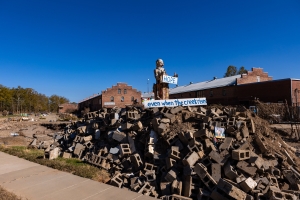
Hope Even When the Creek Rises. Photo courtesy of Michael Oppenheim.
“There are still significant gaps,” said Whiteside. “The next phase of funding is focused on housing, mental health, education, and legal support. We’re also working closely with state and federal agencies to make sure communities aren’t falling through the cracks.”
And yet, amid the continuing hardship, there is hope.
“This has been a hard year, but it’s also been one filled with courage, generosity, and a deep commitment to community,” Whiteside said. “When I think about how people across the state came together—from the Outer Banks to the Blue Ridge—I’m reminded that North Carolina is at its best when we show up for each other.”
